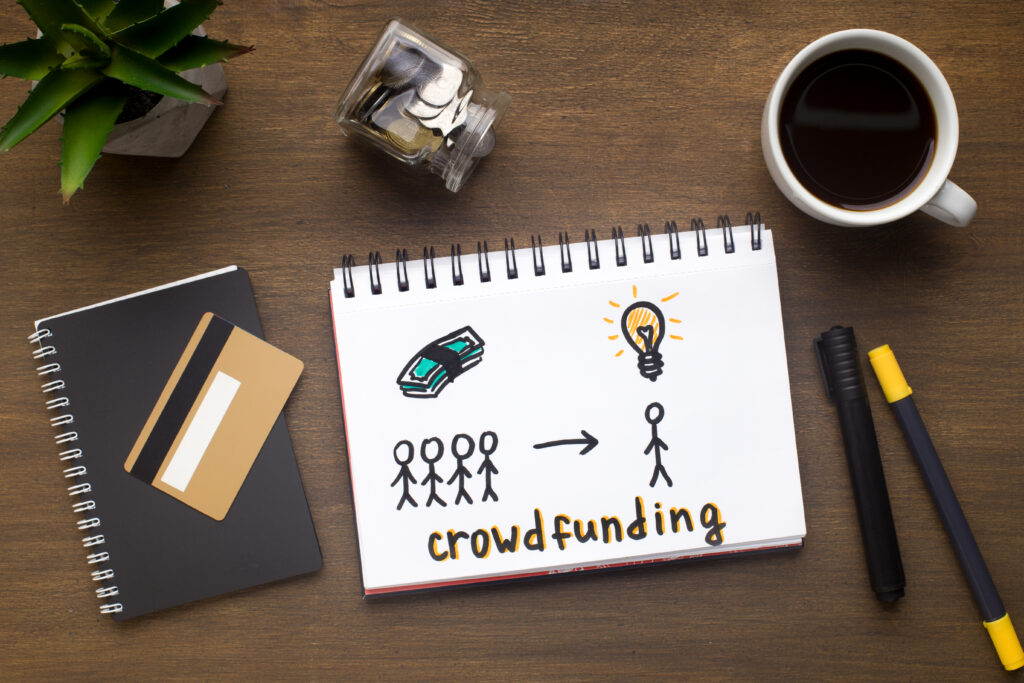Fundraising serves as the lifeblood for countless organizations, charities, and individuals striving to make a positive impact in their communities and beyond. For beginners venturing into the world of fundraising, understanding its importance is paramount to their success and the success of the causes they support.
Fundraising for beginners isn’t just about raising funds; it’s about igniting change, fostering connections, and rallying support for causes close to their hearts. Whether it’s supporting local community initiatives, funding critical research, or providing aid to those in need, the role of beginner fundraisers cannot be overstated.
At its core, fundraising empowers individuals to be catalysts for change, enabling them to contribute to causes they are passionate about and make a tangible difference in the world. For beginners, it offers a platform to amplify their voices, leverage their networks, and mobilize resources to address pressing issues and create positive change.
Moreover, fundraising for beginners is a journey of growth and learning. It provides valuable opportunities to develop essential skills such as communication, networking, and strategic planning. Through the process of fundraising, beginners gain invaluable experience and confidence that will serve them well in both their personal and professional endeavors.
Understanding the Basics of Fundraising
Fundraising can be defined as the process of soliciting and collecting contributions, typically monetary, from individuals, organizations, or groups to support a specific cause, project, or initiative. It encompasses a wide range of activities, including but not limited to events, campaigns, appeals, and grant applications, all aimed at generating financial support for a particular purpose. Fundraising is not only about raising funds but also about building relationships, raising awareness, and mobilizing resources to drive positive change in society.
Effective Fundraising for Beginners
Effective fundraising is essential for beginners for several reasons:
- Financial Support: Fundraising provides beginners with the necessary financial support to kickstart their projects, initiatives, or campaigns. It enables them to cover essential costs, such as operational expenses, program development, and outreach efforts, that would otherwise be unattainable.
- Amplifying Impact: By successfully fundraising, beginners can amplify their impact and reach a broader audience. The funds raised enable them to scale their efforts, expand their reach, and make a more significant difference in the communities they serve.
- Building Credibility: Successful fundraising can enhance the credibility and legitimacy of beginners and their causes. It demonstrates their ability to garner support, mobilize resources, and execute initiatives effectively, which can attract additional donors, partners, and supporters in the future.
- Empowerment: Fundraising empowers beginners to take ownership of their projects and initiatives. It gives them a sense of agency and responsibility, allowing them to drive positive change and address issues they are passionate about actively.
- Skill Development: Engaging in fundraising provides beginners with valuable opportunities to develop essential skills, such as communication, networking, strategic planning, and budget management. These skills are transferable and can benefit beginners in various personal and professional contexts.
Common Misconceptions About Fundraising
Despite its importance, fundraising is often surrounded by misconceptions that can deter beginners from engaging in this critical activity. Some common misconceptions include:
- Fundraising is only about asking for money: While soliciting donations is a crucial aspect of fundraising, it is not the only component. Fundraising involves building relationships, storytelling, strategic planning, and stewardship, all of which contribute to its success.
- Fundraising is only for large organizations: Fundraising is accessible to individuals, grassroots organizations, and small nonprofits, not just large institutions. With the right approach and strategy, beginners can successfully raise funds and make a significant impact, regardless of their size or scale.
- Fundraising is intimidating and complex: While fundraising can seem daunting at first, it is a learnable skill that anyone can master with time, effort, and practice. By breaking down the process into manageable steps and leveraging available resources and support networks, beginners can navigate fundraising successfully.
- Fundraising is solely transactional: Effective fundraising goes beyond simple transactions; it is about building meaningful relationships with donors based on trust, transparency, and shared values. By cultivating authentic connections and stewarding donors effectively, beginners can foster long-term support and engagement.
- Fundraising is not ethical: Ethical fundraising is rooted in integrity, honesty, and respect for donors and their contributions. Beginners can uphold ethical standards by being transparent about their fundraising activities, honoring donor intent, and adhering to best practices and regulations governing fundraising.

Preparing for Successful Fundraising
Setting clear goals and objectives is the foundation of any successful fundraising effort. Beginners should take the time to define what they hope to achieve through their fundraising campaign or initiative. This involves:
- Defining Specific Goals: Beginners should clearly articulate their fundraising goals, including the amount of money they aim to raise, the timeframe for the campaign, and the intended impact of the funds raised. Whether it’s funding a specific project, supporting ongoing operations, or addressing a pressing need, having specific goals helps focus fundraising efforts.
- Establishing Measurable Objectives: In addition to setting clear goals, beginners should establish measurable objectives to track their progress and evaluate their success. This may include metrics such as the number of donors recruited, the average donation amount, or the percentage of funds raised relative to the target goal.
- Aligning Goals with Mission and Values: It’s essential for beginners to ensure that their fundraising goals align with the mission, vision, and values of their organization or cause. This ensures authenticity and transparency in their fundraising efforts, which is crucial for building trust and credibility with donors.
Identifying Target Donors
Identifying target donors is key to maximizing fundraising success and reaching the right audience with the right message. Beginners should consider the following when identifying their target donors:
- Understanding Donor Profiles: Beginners should conduct research to understand the demographics, interests, and motivations of their target donors. This may include analyzing existing donor data, conducting surveys or focus groups, and studying similar organizations or campaigns.
- Segmenting Donor Groups: Once target donors have been identified, beginners should segment them into distinct groups based on shared characteristics or preferences. This allows for more personalized and targeted outreach efforts, increasing the likelihood of engagement and donations.
- Prioritizing Relationships: Building meaningful relationships with donors is essential for long-term fundraising success. Beginners should prioritize cultivating relationships with key donors, influencers, and stakeholders through personalized communication, stewardship, and engagement opportunities.
Crafting a Compelling Story or Message
Crafting a compelling story or message is essential for capturing the attention and hearts of potential donors. Beginners should focus on the following elements when crafting their story or message:
- Highlighting Impact and Need: Beginners should clearly communicate the impact of their organization or cause and the specific need or problem they are addressing. Sharing real-life examples, testimonials, and success stories can help illustrate the tangible difference donors can make through their support.
- Connecting Emotionally: Effective storytelling taps into emotions and connects with donors on a personal level. Beginners should strive to evoke empathy, compassion, and inspiration through their story, making donors feel invested in the cause and compelled to take action.
- Being Authentic and Transparent: Authenticity and transparency are key to building trust with donors. Beginners should be genuine and transparent in their communications, sharing both successes and challenges openly. This fosters a sense of trust and credibility, which is essential for donor engagement and retention.
Building Relationships with Potential Donors
Networking within personal and professional circles is a valuable strategy for building relationships and expanding the donor base. Beginners can leverage their existing connections and networks to identify potential donors and engage them in their cause. This involves:
- Leveraging Personal Relationships: Beginners should reach out to friends, family members, colleagues, and acquaintances who may be interested in supporting their cause. Personal connections often have a vested interest in seeing beginners succeed and can provide valuable support, both financially and through word-of-mouth referrals.
- Engaging Professional Networks: Beginners can tap into their professional networks, including colleagues, mentors, industry peers, and alumni associations, to identify potential donors or sponsors. Attending networking events, industry conferences, and professional gatherings provides opportunities to connect with like-minded individuals who share an interest in philanthropy and social impact.
- Building Genuine Connections: When networking, beginners should focus on building genuine, authentic relationships with potential donors. This involves actively listening, showing genuine interest in others’ interests and concerns, and finding common ground. Building rapport and trust with potential donors lays the foundation for meaningful, long-term relationships.
Utilizing Social Media and Online Platforms
Social media and online platforms offer powerful tools for reaching and engaging potential donors on a large scale. Beginners can leverage these platforms to expand their reach, raise awareness about their cause, and cultivate relationships with donors. This involves:
- Establishing a Strong Online Presence: Beginners should establish a presence on popular social media platforms such as Facebook, Twitter, Instagram, LinkedIn, and YouTube. Creating engaging content, including posts, videos, and images, helps attract followers and generate interest in the cause.
- Engaging with Followers: Actively engaging with followers and supporters on social media is essential for building relationships and fostering a sense of community. Beginners should respond to comments, messages, and inquiries promptly, and encourage dialogue and interaction among followers.
- Leveraging Fundraising Tools: Many social media platforms offer built-in fundraising tools and features that make it easy for users to donate directly to a cause. Beginners can utilize these tools to create fundraising campaigns, share donation links, and track contributions in real-time, maximizing the impact of their fundraising efforts.
Hosting Events or Fundraisers to Engage with Potential Donors
Hosting events or fundraisers is an effective way to engage with potential donors in person, foster connections, and inspire support for the cause. Beginners can organize various types of events, from small gatherings to larger-scale fundraisers, tailored to their audience and fundraising goals. This involves:
- Planning Memorable Events: Beginners should plan events that are memorable, meaningful, and aligned with their cause and audience preferences. Whether it’s a charity gala, community fundraiser, or awareness-building event, the key is to create an experience that resonates with attendees and leaves a lasting impression.
- Cultivating Relationships: Events provide opportunities for beginners to cultivate relationships with potential donors in a relaxed, social setting. Beginners should take the time to connect with attendees individually, share their story and mission, and express gratitude for their support and attendance.
- Incorporating Fundraising Activities: Fundraising events should include specific fundraising activities or initiatives to generate donations and support for the cause. This may include auctions, raffles, donation drives, or peer-to-peer fundraising campaigns, all designed to engage attendees and inspire them to contribute to the cause.
Crafting an Effective Donation Ask
Personalization is key when crafting donation asks, as it helps tailor the message to resonate with different donor segments. Beginners should consider the following strategies for personalizing their asks:
- Segmenting Donors: Beginners should segment their donor base based on factors such as giving history, interests, demographics, and level of engagement. This allows them to create targeted messages that speak directly to the unique preferences and motivations of each donor segment.
- Customizing Messaging: Once donor segments have been identified, beginners can customize their messaging to appeal to each group’s specific interests, values, and preferences. This may involve highlighting different aspects of the cause or framing the ask in a way that resonates with the target audience.
- Using Personalization Tools: There are various tools and technologies available that can help beginners personalize their donation asks at scale. This includes email marketing platforms with segmentation capabilities, donor management software with CRM functionality, and personalized fundraising pages that allow donors to customize their giving experience.
Utilizing Storytelling to Evoke Emotions
Storytelling is a powerful tool for connecting with donors on an emotional level and inspiring them to take action. Beginners can harness the power of storytelling to craft compelling donation asks by:
- Sharing Impactful Stories: Beginners should share stories that illustrate the real-life impact of their organization or cause. These stories should highlight the people, communities, or animals affected by the cause, making the issue relatable and tangible for donors.
- Using Personal Narratives: Personal narratives are particularly effective at eliciting empathy and connection. Beginners can share personal stories from individuals who have been directly impacted by the cause, such as beneficiaries, volunteers, or supporters, to humanize the issue and create a sense of urgency.
- Incorporating Visuals: Visuals such as photos, videos, and infographics can enhance the storytelling experience and evoke emotions more effectively than text alone. Beginners should incorporate compelling visuals into their donation asks to capture attention, convey emotion, and leave a lasting impression on donors.
Providing Clear and Concise Information about the Cause
Providing clear and concise information about the cause is essential for helping donors understand the importance of their contribution and how it will be used. Beginners should ensure their donation asks include the following key elements:
- Clearly Articulated Need: Beginners should clearly articulate the need or problem their organization or cause is addressing. This includes providing context, statistics, and real-life examples to help donors understand why their support is needed and what impact it will have.
- Specific Fundraising Goal: Beginners should clearly communicate the fundraising goal and how the funds will be used. This helps donors understand the tangible outcomes their contributions will achieve and creates transparency and accountability.
- Call to Action: Every donation ask should include a clear call to action that prompts donors to take the desired next step, whether it’s making a donation, sharing the ask with their network, or volunteering their time. Beginners should make it easy for donors to take action by providing clear instructions and links to donation pages or other relevant resources.
Overcoming Objections and Handling Rejections
Facing objections is a natural part of the fundraising process, but with the right approach, beginners can effectively address concerns and overcome objections. Some common objections and strategies for addressing them include:
- Financial Concerns: Donors may express concerns about their financial situation or ability to contribute. Beginners can address these objections by emphasizing the impact of even small donations and offering alternative ways to support the cause, such as volunteering time or spreading awareness.
- Lack of Understanding: Donors may be hesitant to contribute if they don’t fully understand the cause or how their donation will be used. Beginners can address this objection by providing clear and concise information about the cause, sharing success stories and impact metrics, and offering opportunities for donors to learn more.
- Trust and Credibility: Some donors may question the credibility or effectiveness of the organization or cause. Beginners can overcome this objection by demonstrating transparency, sharing testimonials and success stories, and providing evidence of the organization’s impact and track record.
- Skepticism or Doubt: Donors may express skepticism or doubt about the effectiveness of the fundraising campaign or the ability to achieve the stated goals. Beginners can address this objection by providing evidence of past successes, outlining a clear plan for how funds will be used, and highlighting milestones and benchmarks for measuring progress.
- Timing: Donors may cite timing as a reason for not contributing, such as financial constraints or other priorities. Beginners can address this objection by emphasizing the urgency and importance of the cause, providing flexible donation options, and offering opportunities for donors to contribute at a later date.
Maintaining Positivity and Resilience in the Face of Rejection
Handling rejection is an inevitable part of fundraising, but it’s essential for beginners to maintain positivity and resilience in the face of challenges. Some strategies for maintaining a positive mindset and bouncing back from rejection include:
- Focus on the Positive: Instead of dwelling on rejection, focus on the positive aspects of the fundraising process, such as the connections made, lessons learned, and progress achieved. Celebrate small victories and milestones along the way to stay motivated and inspired.
- Learn from Rejection: Use rejection as an opportunity for growth and learning. Take the time to reflect on why the rejection occurred, identify areas for improvement, and brainstorm strategies for addressing similar objections in the future. Each rejection is a valuable learning experience that can help strengthen fundraising skills and resilience.
- Seek Support and Encouragement: Surround yourself with a supportive network of peers, mentors, and fellow fundraisers who can provide encouragement, advice, and perspective. Lean on your support system during challenging times, and don’t hesitate to ask for help or guidance when needed.
- Stay Persistent and Resilient: Fundraising requires persistence and resilience in the face of adversity. Remember that rejection is not personal and does not reflect your worth or the value of your cause. Stay focused on your goals, stay true to your mission, and keep pushing forward, knowing that every rejection brings you one step closer to success.
Utilizing Tools and Resources for Fundraising Success
Online fundraising platforms and tools provide beginners with powerful resources to streamline their fundraising efforts, reach a broader audience, and maximize donations. Some key platforms and tools to consider include:
- Crowdfunding Platforms: Websites like Werbylo, Kickstarter, and Indiegogo allow beginners to create fundraising campaigns and collect donations from supporters worldwide. These platforms offer user-friendly interfaces, built-in donation processing, and social sharing features to amplify campaign reach.
- Donation Management Software: Donation management software, such as Werbylo, Bloomerang, and Little Green Light, helps beginners organize donor data, track donations, and manage fundraising campaigns more efficiently. These tools often include features like donor segmentation, email marketing, and reporting capabilities to optimize fundraising efforts.
- Peer-to-Peer Fundraising Platforms: Platforms like Werbylo, Fundly, and FirstGiving enable beginners to mobilize supporters to fundraise on their behalf. Peer-to-peer fundraising empowers supporters to create their own fundraising pages and solicit donations from their networks, exponentially increasing campaign reach and impact.
- Social Media Fundraising Tools: Social media platforms like Facebook, Instagram, and Twitter offer built-in fundraising tools and features that allow beginners to create fundraising campaigns, collect donations, and engage supporters directly on social media. These tools leverage the power of social networks to drive donations and awareness for the cause.
Creating Compelling Visuals and Multimedia Content
Compelling visuals and multimedia content are essential for capturing attention, conveying emotion, and inspiring action in fundraising campaigns. Beginners can create visually compelling content by:
- Using High-Quality Imagery: Incorporate high-quality photos and images that visually communicate the impact of the cause and evoke emotion in supporters. Choose images that tell a story, showcase beneficiaries or success stories, and resonate with the audience’s values and interests.
- Creating Engaging Videos: Videos are highly effective at capturing attention and conveying the urgency and importance of the cause. Beginners can create short, compelling videos that highlight the organization’s mission, programs, and impact, and feature testimonials from beneficiaries, volunteers, or supporters.
- Designing Infographics: Infographics are visually appealing and easy-to-digest formats for presenting information and data in a concise and engaging manner. Beginners can create infographics that communicate key statistics, impact metrics, and success stories related to the cause, making complex information more accessible and compelling to donors.
- Incorporating Branding Elements: Maintain consistency in branding elements such as colors, fonts, and logos across all visual content to reinforce brand identity and create a cohesive brand experience for supporters. Consistent branding helps build trust and recognition and enhances the overall impact of fundraising campaigns.
Seeking Guidance from Experienced Fundraisers or Mentors
Seeking guidance from experienced fundraisers or mentors can provide beginners with valuable insights, advice, and support to navigate the complexities of fundraising effectively. Some ways to seek guidance include:
- Joining Fundraising Communities: Participate in online forums, discussion groups, and social media communities dedicated to fundraising and philanthropy. These platforms provide opportunities to connect with experienced fundraisers, share best practices, and seek advice and feedback on fundraising strategies and challenges.
- Attending Workshops and Training Sessions: Attend workshops, webinars, and training sessions offered by nonprofit organizations, fundraising associations, or industry experts. These events provide valuable learning opportunities and practical guidance on fundraising tactics, donor engagement strategies, and campaign planning.
- Finding a Mentor: Seek out experienced fundraisers or nonprofit professionals who are willing to serve as mentors and provide personalized guidance and support. A mentor can offer valuable insights, share their expertise, and provide encouragement and accountability as beginners navigate their fundraising journey.
- Networking with Peers: Build relationships with other fundraisers, nonprofit professionals, and industry leaders through networking events, conferences, and professional associations. Networking provides opportunities to exchange ideas, learn from others’ experiences, and expand your support network within the fundraising community.

Acknowledging and Appreciating Donors
Expressing gratitude to donors is essential for fostering goodwill, building trust, and cultivating lasting relationships. The importance of expressing gratitude to donors includes:
- Recognition and Appreciation: Donors contribute their time, money, and support to causes they care about, often without expecting anything in return. Expressing gratitude acknowledges their generosity and demonstrates appreciation for their contributions, fostering a sense of validation and recognition.
- Strengthening Relationships: Gratitude is a powerful tool for building and strengthening relationships with donors. When donors feel appreciated and valued, they are more likely to continue supporting the cause, increase their level of engagement, and become advocates and ambassadors for the organization.
- Encouraging Repeat Giving: Donors who feel appreciated and valued are more likely to continue giving to the organization over time. By expressing gratitude consistently and authentically, organizations can encourage repeat giving and foster a sense of loyalty and commitment among donors.
Creative Ways to Thank Donors for Their Contributions
There are countless creative ways to thank donors for their contributions, ranging from personalized gestures to meaningful experiences. Some creative ways to thank donors include:
- Personalized Thank-You Notes: Send personalized thank-you notes or letters to donors, expressing gratitude for their specific contribution and highlighting the impact of their support on the cause.
- Public Recognition: Recognize donors publicly through social media shout-outs, donor appreciation events, or acknowledgment in newsletters, annual reports, or on the organization’s website.
- Exclusive Content or Updates: Provide donors with exclusive content, updates, or behind-the-scenes access to the organization’s work, giving them a sense of insider involvement and appreciation.
- Thank-You Gifts: Send donors thank-you gifts such as branded merchandise, certificates of appreciation, or handwritten cards, as tokens of gratitude for their support.
- Donor Appreciation Events: Host donor appreciation events or receptions to celebrate donors’ contributions, provide networking opportunities, and showcase the impact of their support.
Building Long-Term Relationships with Donors Beyond the Initial Ask
Building long-term relationships with donors goes beyond the initial ask and requires ongoing engagement, communication, and stewardship. Some strategies for building long-term relationships with donors include:
- Regular Communication: Stay in touch with donors through regular communication, including newsletters, updates, impact reports, and personalized outreach. Keep donors informed about the organization’s progress, achievements, and upcoming initiatives.
- Engagement Opportunities: Provide donors with opportunities to engage with the organization beyond financial contributions, such as volunteering, attending events, joining committees, or serving as ambassadors or advocates.
- Personalized Engagement: Tailor engagement efforts to the preferences and interests of individual donors, based on factors such as giving history, communication preferences, and areas of passion or expertise.
- Recognition and Acknowledgment: Continue to recognize and acknowledge donors for their ongoing support, celebrating milestones, anniversaries, and other occasions to show appreciation and reinforce the value of their contributions.
- Feedback and Input: Seek feedback and input from donors on organizational priorities, initiatives, and strategies, demonstrating a commitment to transparency, collaboration, and donor-centricity.
Measuring and Evaluating Fundraising Success
Setting key performance indicators (KPIs) is essential for measuring the success of fundraising campaigns and initiatives. KPIs provide benchmarks against which to evaluate performance and track progress towards fundraising goals. Some common KPIs for fundraising campaigns include:
- Donation Revenue: Measure the total amount of donations raised during the campaign period, including individual donations, corporate sponsorships, and grants.
- Donor Acquisition: Track the number of new donors acquired during the campaign, as well as the donor acquisition cost and conversion rate.
- Donor Retention: Monitor donor retention rates to assess the percentage of donors who continue to support the organization over time.
- Average Gift Size: Calculate the average gift size to understand the typical donation amount and identify opportunities to increase donation amounts.
- Return on Investment (ROI): Evaluate the ROI of fundraising campaigns by comparing the total fundraising costs to the revenue generated.
Analyzing Metrics to Assess the Effectiveness of Fundraising Efforts
Analyzing metrics is crucial for assessing the effectiveness of fundraising efforts and identifying areas for improvement. Some key metrics to analyze include:
- Conversion Rates: Calculate conversion rates for various stages of the fundraising funnel, such as website visitors to donors, email subscribers to donors, and event attendees to donors.
- Engagement Metrics: Monitor engagement metrics such as email open rates, click-through rates, social media engagement, and event attendance to gauge the effectiveness of communication and outreach efforts.
- Donor Demographics: Analyze donor demographics and giving patterns to identify trends, preferences, and opportunities for targeted fundraising strategies.
- Fundraising Channels: Evaluate the performance of different fundraising channels, including online platforms, direct mail, events, and peer-to-peer fundraising, to determine which channels are most effective for reaching and engaging donors.
- Campaign Attribution: Attribute donations to specific fundraising campaigns or initiatives to assess the impact and effectiveness of individual campaigns and inform future planning and resource allocation.
Making Adjustments and Improvements Based on Feedback and Data
Making adjustments and improvements based on feedback and data is essential for optimizing fundraising strategies and maximizing results. Some strategies for using feedback and data to inform decision-making include:
- Conducting Post-Campaign Evaluation: Evaluate the performance of fundraising campaigns after they conclude, gathering feedback from donors, volunteers, staff, and stakeholders to identify successes, challenges, and areas for improvement.
- A/B Testing: Test different fundraising strategies, messages, and appeals using A/B testing or split testing methodologies to determine which approaches resonate most effectively with donors.
- Iterative Improvement: Continuously iterate and refine fundraising strategies based on feedback and data, making adjustments to messaging, targeting, timing, and tactics to optimize performance and maximize impact.
- Data-Informed Decision-Making: Use data and analytics to inform strategic decision-making, resource allocation, and goal setting, ensuring that fundraising efforts are aligned with organizational objectives and priorities.
- Learning and Knowledge Sharing: Foster a culture of learning and knowledge sharing within the organization, sharing insights, best practices, and lessons learned from fundraising initiatives to inform future planning and strategy development.
Conclusion
Are you ready to kickstart your fundraising journey and make a meaningful impact in your community? Look no further than Werbylo – the free fundraising software designed specifically for nonprofits like yours.
With Werbylo, you’ll have access to powerful tools and resources to streamline your fundraising efforts, engage donors, and maximize your impact. From customizable donation pages to easy-to-use donor management tools, Werbylo has everything you need to succeed.
Don’t let fundraising challenges hold you back. Sign up for Werbylo today and join the thousands of nonprofits already making a difference with our platform. Together, we can create positive change and transform lives. Get started now and unleash the full potential of your nonprofit fundraising efforts with Werbylo.




